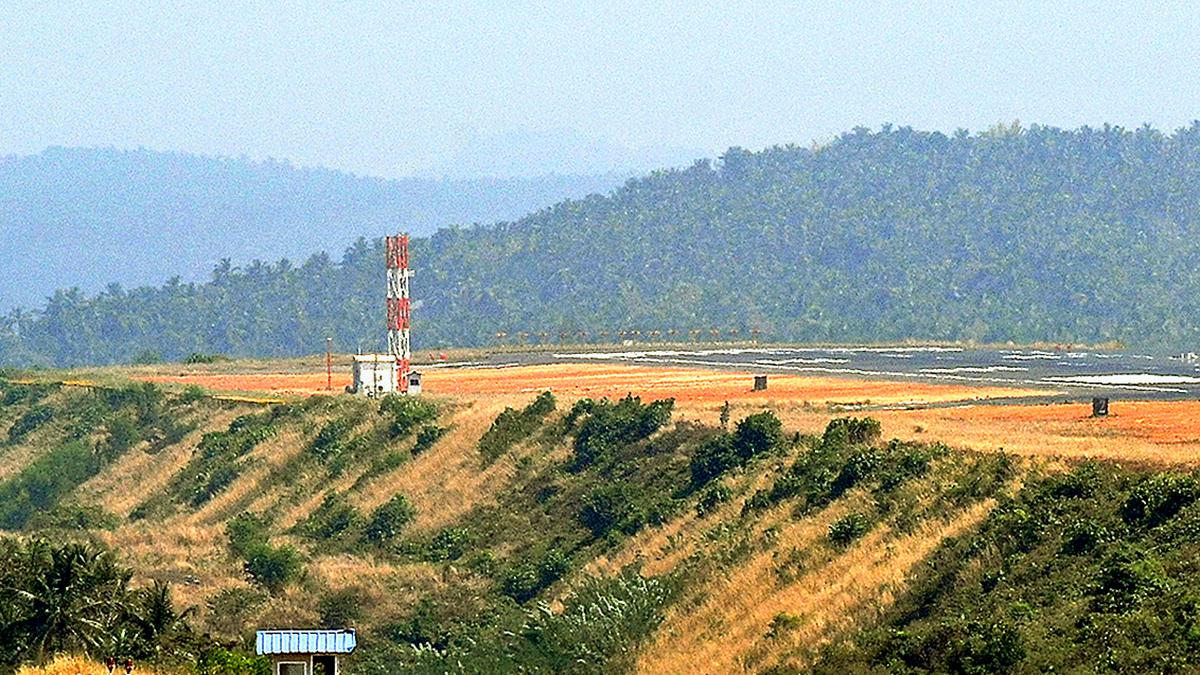
Rainwater harvesting system proposed at Calicut airport
The Hindu
The system could cater for the water requirements of the airport and nearby areas with the addition of a few rainwater tanks at the foothills, say experts
Water treatment experts have suggested the implementation of a proper rainwater harvesting system at the Calicut International Airport along with the drainage system being set up at the facility, to ensure proper utilisation of rainfall.
Environmentalist Manalil Mohanan, former scientist at the Centre for Water Resources Development and Management, Madhavan Komath, and water treatment expert P. Subrahmanian submitted a memorandum to this effect to the Union Minister for Civil Aviation, State Minister for Water Resources, regional head of the Airports Authority of India, and the Director of the Calicut International Airport on Monday.
“So much rainwater is wasted at the airport when even its nearby areas are facing water shortage. This could be resolved through very simple additions to the proposed 4.8-km-long drainage system,” said Mr. Mohanan.
A drainage network has been proposed at the airport to drain away rainwater from the runway and to protect the signal cables. With the simple addition of a few rainwater tanks at the foothills, the system could cater to the water requirements of the entire airport and, if needed, nearby areas. The runway at the airport is around 3 km long and the strips are 100 metres wide. With the usual 300 mm rainfall that the region receives a year, the whole 3 lakh square metres can collect around 900 million litres of water. Since the airport is table top, harvesting can be done without any additional infrastructure or energy as water undergoes a natural filtration as it moves down to the tanks set up at the foothills, Mr. Mohanan explained.
The water thus harvested can be used in fire hydrants at the airport as well. “We have already experienced shortage of water to douse fire at the airport in the past,” he pointed out.
At present, levelling of the basic strip along the runway is in progress, and work on the drainage is expected to begin afterwards.

“Writing, in general, is a very solitary process,” says Yauvanika Chopra, Associate Director at The New India Foundation (NIF), which, earlier this year, announced the 12th edition of its NIF Book Fellowships for research and scholarship about Indian history after Independence. While authors, in general, are built for it, it can still get very lonely, says Chopra, pointing out that the fellowship’s community support is as valuable as the monetary benefits it offers. “There is a solid community of NIF fellows, trustees, language experts, jury members, all of whom are incredibly competent,” she says. “They really help make authors feel supported from manuscript to publication, so you never feel like you’re struggling through isolation.”

Several principals of government and private schools in Delhi on Tuesday said the Directorate of Education (DoE) circular from a day earlier, directing schools to conduct classes in ‘hybrid’ mode, had caused confusion regarding day-to-day operations as they did not know how many students would return to school from Wednesday and how would teachers instruct in two modes — online and in person — at once. The DoE circular on Monday had also stated that the option to “exercise online mode of education, wherever available, shall vest with the students and their guardians”. Several schoolteachers also expressed confusion regarding the DoE order. A government schoolteacher said he was unsure of how to cope with the resumption of physical classes, given that the order directing government offices to ensure that 50% of the employees work from home is still in place. On Monday, the Commission for Air Quality Management in the National Capital Region and Adjoining Areas (CAQM) had, on the orders of the Supreme Court, directed schools in Delhi-NCR to shift classes to the hybrid mode, following which the DoE had issued the circular. The court had urged the Centre’s pollution watchdog to consider restarting physical classes due to many students missing out on the mid-day meals and lacking the necessary means to attend classes online. The CAQM had, on November 20, asked schools in Delhi-NCR to shift to the online mode of teaching.









